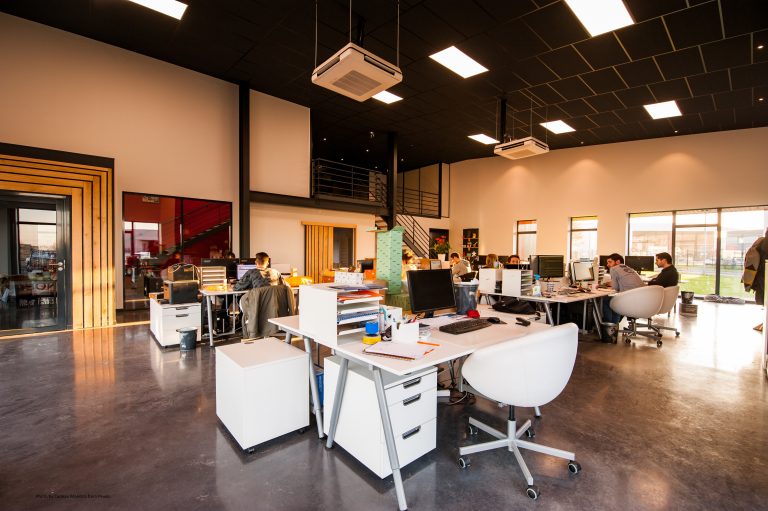As quarantine restrictions loosen in the coming weeks, many companies will begin bringing employees back to the workplace. Some people are excited to get out of their homes and return to their “normal” work setting and look forward to seeing their co-workers again. However, others are very anxious about it. While the transition to working remotely at home was challenging, the transition back to the workplace may be even more difficult. Many people are trying to work out childcare and homeschool logistics and also have real fears about the possibility of contracting the virus and bringing it home to their families.
Changes to Expect in Your Workplace
As we get ready to return to work, we expect it will be back to “the old routine.” We think our brains will be back on auto pilot going through the usual motions of our day. However, that will not be the case. The new reality will revamp our daily routine. Expect changes to where we will park, having our temperatures taken when entering the building, the placement of our work stations/desks, the distance required between people at the water cooler or coffee station, and even bathroom scheduling. Conference meetings will require proper distancing or may still be handled via Zoom from employee’s desks.
How to Deal with Fears
 Public transportation is a requirement for many returning to the workplace. They have to commute on public trains or buses. If it is possible to find a ride share with one or two other people, this is the time to do it. However, if that is not a possibility, be sure to wear a mask properly at all times. Adjusting hours for off-peak travel is helpful, leaving a row of seats in between riders, avoiding standing in crowded spaces, and entering and exiting the bus through the back doors can help reduce transmission of the virus. Hand hygiene is also vital, using sanitizer with at least 60% alcohol after leaving the transit stations and washing hands thoroughly or using hand sanitizer again upon arrival at work and back at home. Avoid touching surfaces, your face, and don’t eat or drink while traveling.
Public transportation is a requirement for many returning to the workplace. They have to commute on public trains or buses. If it is possible to find a ride share with one or two other people, this is the time to do it. However, if that is not a possibility, be sure to wear a mask properly at all times. Adjusting hours for off-peak travel is helpful, leaving a row of seats in between riders, avoiding standing in crowded spaces, and entering and exiting the bus through the back doors can help reduce transmission of the virus. Hand hygiene is also vital, using sanitizer with at least 60% alcohol after leaving the transit stations and washing hands thoroughly or using hand sanitizer again upon arrival at work and back at home. Avoid touching surfaces, your face, and don’t eat or drink while traveling.
Co-Worker Interactions
Contracting COVID-19 from co-workers is at the heart of most fears. Social distancing of six feet between employees is crucial. Wearing proper masks and following all the protocols set up by your workplace are key to avoiding contamination. These adjustments require a lot of mental energy, as well as patience and being flexible. Protocols will change as issues arise or over time as new information about the virus develops. If someone innocently forgets to follow a protocol, remind them and try to find a way to laugh about it, rather than accuse and blame. It is important not to keep fears bottled inside and have anxiety get out of control. Find a close friend, boss, co-worker, HR person, or mental health professional to confide in if you feel overwhelmed.
Anxiety about Childcare and Homeschool Logistics
Anxiety about reliable childcare and homeschool logistics can undermine efforts to successfully return to the workplace. There is currently no federal law covering non-government employees who take off from work to care for healthy children. Employers are not required by federal law to provide leave to employees caring for dependents who have been dismissed from school or child care. However, given the potential for significant illness under some pandemic influenza scenarios, larger employers/corporations should review their leave policies to consider providing increased flexibility to their employees and their families.
law covering non-government employees who take off from work to care for healthy children. Employers are not required by federal law to provide leave to employees caring for dependents who have been dismissed from school or child care. However, given the potential for significant illness under some pandemic influenza scenarios, larger employers/corporations should review their leave policies to consider providing increased flexibility to their employees and their families.
As a parent, try to keep in mind that there are protocols in place for your child. The CDC’s updated Guidance for Operating Child Care Programs during COVID-19 is intended for all types of child care programs, including child care centers, family child care homes, Head Start programs, and other pre-kindergarten programs. It outlines strategies that child care programs can use to maintain healthy environments and operations, lower the risk of COVID-19 spread in their programs, prepare for when someone is sick with COVID-19, and support coping and resilience. Teachers and other school administrators are being vaccinated early on, and schools that have students returning to the classroom are under strict guidelines to help keep children safe. When employing a person to provide childcare or assist children with virtual learning in the home, be sure to go over all mask and other requirements deemed necessary. By keeping all of these things in mind, it can help reassure parents returning to the office that their children are safe at home and at school.
Find Joy
 In the workplace, try to find creative ways to replace the hugs or high-fives you once routinely exchanged with co-workers. For a work team that was not close pre-pandemic, this is the perfect time to try to build some camaraderie together. Try to find ways to laugh at things rather than feel frustrated and cross. The transition back to the office will feel different for each of us. Our joys and fears won’t always match those of others. What we can manage is our responses to the transition and how we support others through theirs.
In the workplace, try to find creative ways to replace the hugs or high-fives you once routinely exchanged with co-workers. For a work team that was not close pre-pandemic, this is the perfect time to try to build some camaraderie together. Try to find ways to laugh at things rather than feel frustrated and cross. The transition back to the office will feel different for each of us. Our joys and fears won’t always match those of others. What we can manage is our responses to the transition and how we support others through theirs.
We are living through an unprecedented moment in history that will change the world in ways we’ve yet to understand. Let’s try to get through it together.




